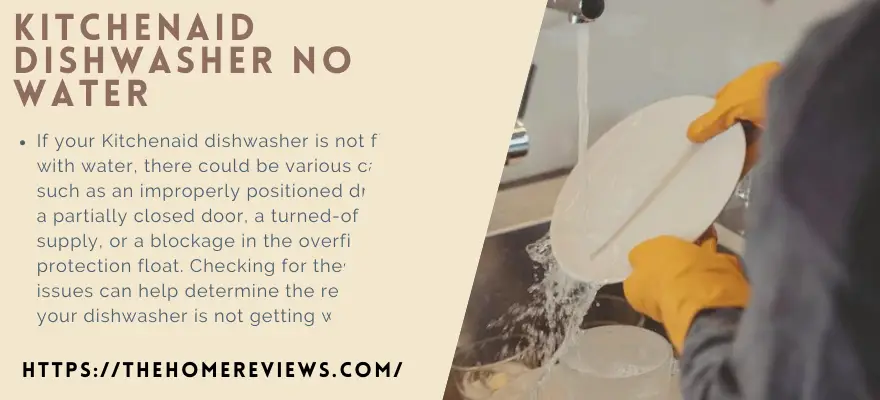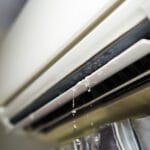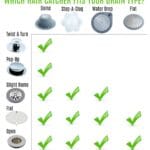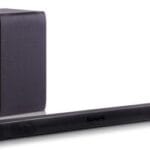
If your Kitchenaid dishwasher is not filling with water, there could be various causes, such as an improperly positioned drain hose, a partially closed door, a turned-off water supply, or a blockage in the overfill protection float. Checking for these potential issues can help determine the reason why your dishwasher is not getting water.
Diagnosing The Problem
Issue with the water inlet valve, a clogged filter, or a malfunctioning float switch. Diagnosing the problem will help determine the necessary steps to fix your Kitchenaid dishwasher with no water.
If you’re experiencing a Kitchenaid dishwasher that’s not filling with water, there could be several reasons behind this issue. Before calling for professional assistance, you can try diagnosing the problem yourself. Here are a few steps you can take to identify the cause:
Checking the Float:
- Start by inspecting the float inside the dishwasher. The float is a small plastic or metal device located at the bottom of the dishwasher’s tub.
- Lift the float up and down a few times to ensure it moves freely. If the float is stuck in the raised position, it may signal to the dishwasher that it already has enough water and needs to drain, preventing it from filling up.
- Look for any debris or obstructions in the float area. Sometimes, food particles or other objects can get in the way, hindering the float’s movement.
- Clean the float and the surrounding area thoroughly to ensure proper functioning.
Filling The Dishwasher With Water:
- After checking the float, it’s time to fill the dishwasher with water and see if it starts working.
- Make sure the water supply to the dishwasher is turned on. Sometimes, a simple oversight like closing the water valve can lead to the dishwasher not filling up.
- Open the dishwasher door and locate the dishwasher’s fill valve, which is usually located at the bottom of the unit. The fill valve controls the flow of water into the dishwasher.
- Check if there are any loose connections or kinks in the water supply line leading to the fill valve. Tighten any loose connections and straighten out any kinks to ensure proper water flow.
- Run a test cycle on your dishwasher and observe if water enters the unit. If the dishwasher is now filling with water, you might have solved the problem. If not, there may be another issue at hand, and it’s best to seek professional help.
Remember, these steps are just a starting point for diagnosing the problem. If you’re uncomfortable or unsure about any of the troubleshooting steps, it’s always recommended to consult a professional dishwasher repair service. They have the necessary knowledge and tools to accurately diagnose and fix the issue with your Kitchenaid dishwasher.
So, give these steps a try and see if you can get your dishwasher back to working order without the need for professional intervention.
Fixing The Water Inlet Valve
Be due to a faulty water inlet valve. Learn how to fix this issue and get your Kitchenaid dishwasher running smoothly again with our step-by-step guide.
Is your Kitchenaid dishwasher not filling with water? Don’t worry, we’ve got you covered! One possible cause could be a faulty water inlet valve. In this section, we’ll walk you through the steps to test and fix the water inlet valve in your dishwasher.
Testing The Solenoid For Continuity:
To check if the solenoid in the water inlet valve is working properly, you can perform a continuity test. Here’s how:
- Disconnect the dishwasher from the power source.
- Locate the water inlet valve, usually located at the bottom of the dishwasher.
- Remove the wires connected to the solenoid terminals.
- Set your multimeter to the continuity or resistance setting.
- Place the probes on the two solenoid terminals.
- If the multimeter beeps or shows a low resistance reading, the solenoid is working fine. If there is no continuity, you’ll need to replace the water inlet valve.
Float Switch:
Another potential issue could be a stuck float switch. The float switch is responsible for regulating the water level in the dishwasher. Here’s what you can do to check for any problems:
- Locate the float switch inside the dishwasher.
- Gently lift the float assembly up and down to see if it moves freely.
- If the float is stuck in the raised position, it may be preventing water from entering the dishwasher. Clean any debris or obstructions that may be causing the float to stick.
Door Switch:
A faulty door switch can also lead to a Kitchenaid dishwasher not filling with water. To check if the door switch is the culprit, follow these steps:
- Open and close the dishwasher door firmly.
- Listen for a click sound when you close the door. This indicates that the door switch is working properly.
- If you don’t hear a click or the dishwasher doesn’t start filling with water after closing the door, you may need to replace the door switch.
Inspect And Clean Filter:
A clogged filter can restrict water flow and prevent your dishwasher from filling properly. To clean the filter:
- Locate the filter, usually at the bottom of the dishwasher.
- Remove the filter and rinse it under running water to remove any debris.
- Inspect the filter for any damage and replace it if necessary.
By following these troubleshooting steps, you should be able to fix the water inlet valve issue in your Kitchenaid dishwasher. Remember to always disconnect the dishwasher from the power source before performing any repairs or tests. If the problem persists, it’s recommended to consult a professional for further assistance.
Other Possible Causes
Sue with the water inlet valve, a clogged filter, a faulty float switch, or a problem with the door switch. Check these possible causes to troubleshoot your KitchenAid dishwasher that has no water.
Not Draining:
- If your Kitchenaid dishwasher is not draining, it could be due to a clogged drain hose or a malfunctioning drain pump.
- Check the drain hose for any kinks or clogs. Straighten the hose if necessary and remove any debris that might be blocking the flow of water.
- Another possible cause of a dishwasher not draining is a faulty drain pump. The drain pump is responsible for removing the water from the dishwasher during the drain cycle. If the pump is malfunctioning, it may need to be replaced.
Spraying Water Issues:
- If your Kitchenaid dishwasher is not spraying water properly, it could be due to a clogged spray arm or malfunctioning spray arm motor.
- Inspect the spray arm for any obstructions or debris. Clean the spray arm thoroughly to ensure that water can flow freely through the spray nozzles.
- Additionally, check the spray arm motor for proper functioning. If the motor is not working correctly, it may need to be replaced to restore proper water spraying.
Dishwasher Won’t Fill:
- If your Kitchenaid dishwasher won’t fill with water, the issue could be with the water inlet valve or the float switch.
- The water inlet valve controls the flow of water into the dishwasher. If it is faulty, it may not allow water to enter the dishwasher. Consider replacing the water inlet valve if needed.
- The float switch is located at the bottom of the dishwasher tub and detects the water level. If the float switch is stuck or not functioning properly, it may prevent the dishwasher from filling with water. Check the float switch and clean or replace it if necessary.
Frequently Asked Questions On Kitchenaid Dishwasher No Water
Why Is There No Water In My Kitchenaid Dishwasher?
Your KitchenAid dishwasher may have no water due to an improperly positioned drain hose, a partially closed door, a turned-off water supply, or a stuck overfill protection float. For possible causes and fixes, visit KitchenAid. com.
Why Is No Water Going Into My Dishwasher?
No water may be going into your dishwasher due to an improperly positioned drain hose, a partially closed door, a turned-off water supply, or a blocked overfill protection float.
How Do I Reset My Kitchenaid Dishwasher?
To reset your KitchenAid dishwasher, follow these steps:1. Check the water supply to ensure it is turned on. 2. Make sure the drain hose is properly positioned and not clogged. 3. Ensure the dishwasher door is fully closed. 4. If the issue persists, check the overfill protection float for any obstructions.
If these steps do not resolve the issue, it is recommended to contact KitchenAid for further assistance.
What Is The Most Common Problem With A Kitchenaid Dishwasher?
The most common problem with a KitchenAid dishwasher is that it won’t fill with water.
Why Is My Kitchenaid Dishwasher Not Filling With Water?
If your Kitchenaid dishwasher is not filling with water, it could be due to a faulty water inlet valve or a clogged inlet hose. Check these components for any issues and replace if necessary.
Conclusion
Longer be getting water. It could be due to a faulty water inlet valve, a clogged float switch, or a malfunctioning door switch. Additionally, an improperly positioned drain hose or a water supply that has been turned off could also be the culprit.
If you’re experiencing this issue with your Kitchenaid dishwasher, it’s important to address it as soon as possible to avoid further damage. You can try troubleshooting the problem by checking the water inlet valve, testing the solenoid for continuity, and inspecting and cleaning the filter.
However, if these steps don’t resolve the issue, it’s recommended to seek professional assistance or consider replacing the necessary parts. By fixing the no-water problem, you can ensure your Kitchenaid dishwasher continues to function efficiently and effectively, leaving you with sparkling clean dishes every time.




